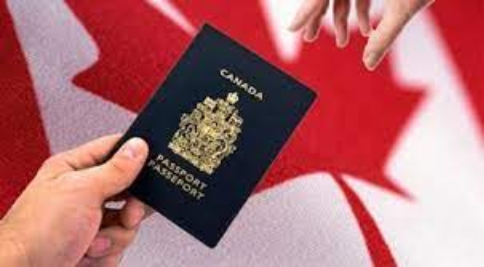In many religious traditions, starting a spiritual journey of prayer has great significance. One frequently asked question by women is: When is the right time to start praying again after the menstrual cycle? This contemplative subject of striking a careful balance between bodily purity and spiritual dedication is relevant to people of many cultural backgrounds. In this investigation, we explore the factors and viewpoints related to when to start praying again after menstruation.
When To Start Praying After Period
In Islam, the period during which a woman cannot perform ritual prayers (Salah) is known as “Hayd” (menstruation). During this time, women are exempt from praying and fasting until their menstruation ends. The exact duration can vary for each woman, so it’s important to be aware of your menstrual cycle.
Once the menstruation period ends, a woman should perform Ghusl, which is a full-body ritual purification, and then she can resume her prayers and other religious activities. Ghusl involves washing the entire body with water, ensuring that the water reaches every part of the body.
It’s recommended to start praying as soon as possible after the menstrual period ends, without unnecessary delay. However, there is no specific time frame mentioned in Islamic teachings about how soon one should start praying after the period. It is more about ensuring that the purification process (Ghusl) is completed and the woman is in a clean state before resuming prayers.
It’s important to note that while a woman is excused from performing prayers during her menstrual period, she is still encouraged to engage in other forms of worship, such as making supplications (dua), remembering Allah (dhikr), and reading or listening to the Quran. Additionally, she should refrain from entering the mosque during her menstrual period, as mosques are considered places of ritual purity, and women in a state of menstruation are not in a state of ritual purity.
How To Re-establish Or Enhance Your Prayer Life After Period
Ways to re-establish or enhance your prayer routine after a break, here are some general suggestions:
1. Set a Schedule
Establish a consistent time for prayer each day. This can help create a routine and make it easier to remember.
2. Start Gradually
If you’re getting back into a routine, start with a few minutes of prayer and gradually increase the duration as you become more comfortable.
3. Choose a Quiet Space
Find a quiet and comfortable place where you can focus without distractions.
4. Reflect on Intentions
Take a moment to reflect on your intentions for prayer. What do you hope to gain from this practice? Setting clear intentions can deepen the meaning of your prayers.
5. Use a Prayer Guide or Book
If you’re unsure where to start, consider using a prayer guide or religious text. It can provide structure and inspiration for your prayers.
6. Express Gratitude
Begin your prayers by expressing gratitude. Reflect on the positive aspects of your life and acknowledge the blessings you have.
7. Combine Prayer with Other Rituals
Integrate prayer into existing routines, such as before or after meals, or as part of your morning or bedtime routine.
8. Experiment with Different Forms of Prayer
Explore different forms of prayer, such as silent meditation, recitation of sacred texts, or spontaneous conversation with the divine.
9. Join a Community
If possible, consider joining a religious or spiritual community. Group prayers can provide support and motivation.
10. Be Patient and Forgiving
Understand that establishing a prayer routine takes time. Be patient with yourself and allow for flexibility in your approach. If you miss a session, don’t be too hard on yourself—simply resume when you can.
How To Be Cleans Before Praying After Period
In Islam, there are specific guidelines for purification before performing prayers, and this includes the purification after menstruation (hayz) or postpartum bleeding (nifas). Here is a step-by-step guide on how to perform the purification ritual known as “Ghusl” after the menstrual period:
1. Intention (Niyyah): Begin with a sincere intention to perform Ghusl for purification. The intention should be in your heart, and it is not necessary to verbalize it.
2. Say “Bismillah”: Start by saying “Bismillah” (In the name of Allah) to begin the purification process.
3. Wash Hands: Wash your hands thoroughly, ensuring that every part is wetted.
4. Private Parts: Clean the private parts by removing any traces of menstrual blood or discharge.
5. Perform Wudu (Ablution): Perform a complete ablution (wudu) just as you would before regular prayers. This involves washing the face, hands, mouth, nose, head, and feet.
6. Pour Water Over Entire Body: Take a full bath by pouring water over your entire body, ensuring that every part of your body is washed. It is recommended to pour water three times over the head, the right side of the body, and then the left side.
7. Use Soap or Cleaners: While not mandatory, using soap or a cleanser during the bath is encouraged to ensure thorough cleanliness.
8. Hair: Ensure that water reaches the roots of the hair during the bath. If you have braided or tied hair, make sure to undo the braids to allow water to reach the hair beneath.
9. Sequence: There is no specific sequence mentioned in the Quran or Hadith, but it is commonly recommended to wash the head, then the right side of the body, and finally the left side.
10. Final Declaration: After completing the bath, declare the completion of your Ghusl by saying, “Ashhadu an la ilaha illallah, wa ashhadu anna Muhammadan ‘abduhu wa rasuluh” (I bear witness that there is no god but Allah, and I bear witness that Muhammad is His servant and Messenger).
Conclusion
It takes sophisticated knowledge to discern when to resume prayers following the menstrual cycle when managing the junction of faith and physical cycles. Different religious traditions provide different perspectives, and personal interpretations can differ. In the end, the choice is based on one’s personal convictions and religious teachings. People can achieve a harmonious balance between their spiritual devotion and physical concerns by pursuing knowledge and insight.
Frequently Asked Questions
1. When can I start praying again after my period?
The guidelines for resuming prayers after menstruation vary across religious traditions. It is advisable to consult with religious scholars or leaders within your faith community for specific guidance.
2. Are there cultural differences in the timing of resuming prayers after menstruation?
Yes, cultural and regional variations exist in the practices related to post-menstrual prayer. Understanding the nuances within your community and seeking guidance from religious authorities can provide clarity.
3. Can I perform any specific rituals before resuming prayers after my period?
Certain traditions recommend rituals or acts of purification before resuming prayers. Referencing religious texts and seeking advice from knowledgeable individuals can offer insights into these practices.






